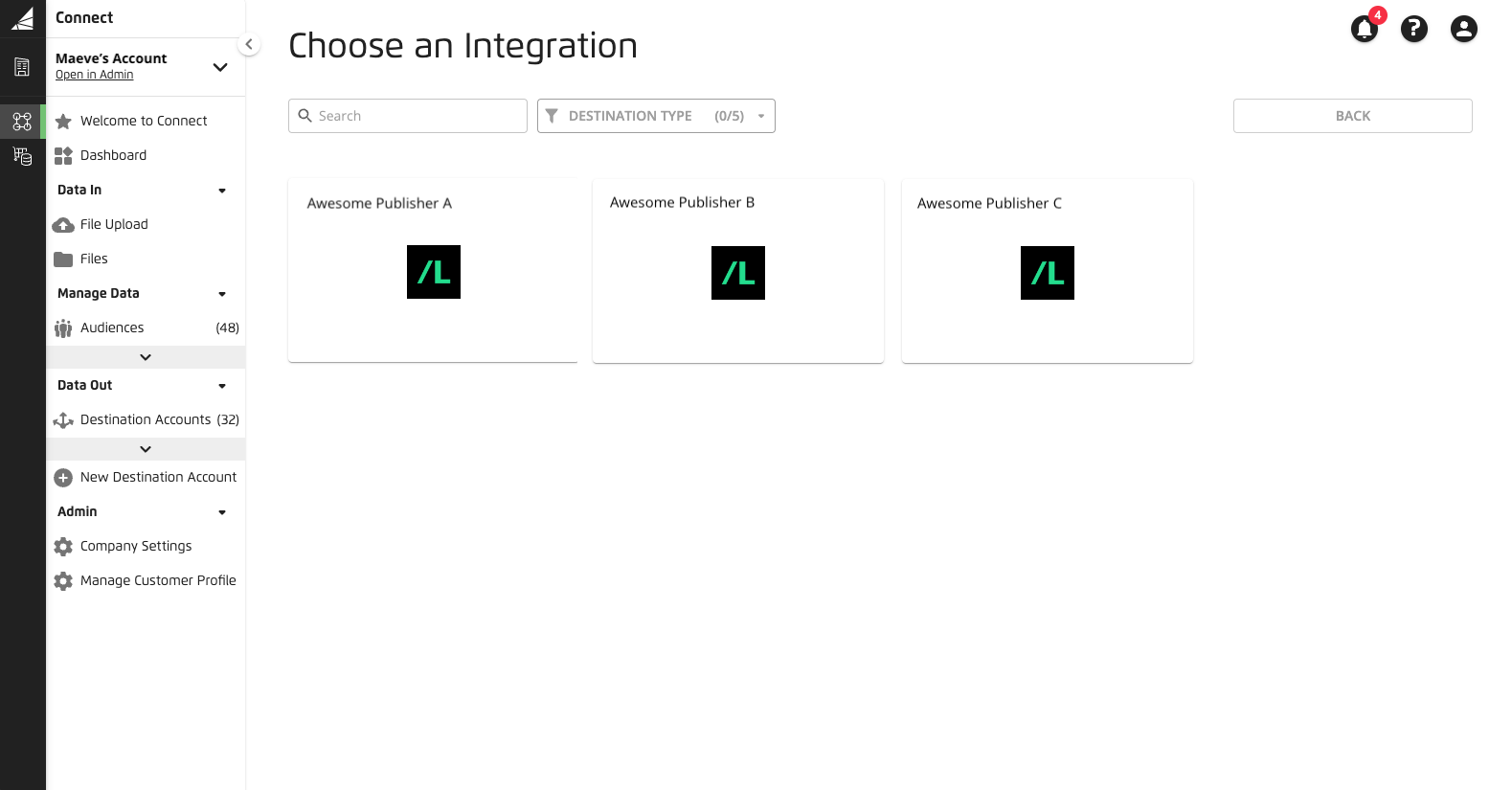ATS Direct for Publishers
If you have a marketing partner you want to work with, ATS Direct enables direct media buys between publishers and marketers. It allows marketers to distribute their segments to publishers via LiveRamp Connect. You can activate the segments in Console as a deal without ever seeing the marketer's audience and the marketer never seeing your data.
How it Works
ATS Direct uses tried and tested infrastructure from LiveRamp Connect, a LiveRamp product that enables marketers to manage and segment their data. ATS Direct enables approved marketer segments to be returned as a key-value pair to the publisher's ad server for targeting.
See the overview of ATS Direct flow below:
Marketers and publishers negotiate the terms of the deal outside of Console.
Once a deal has been settled, the marketer activates your destination account in Connect and uses that destination account to distribute their segments to Console.
You get notified when a marketer sends a new audience from Connect.
You activate the deal in the ATS Direct section of Console.
The marketer gets an email notifying them that the deal has been approved.
You create a line item in Google Ad Manager with custom targeting set up using the value of the Deal ID (Segment ID for the marketer).
ATS Direct and ATS
ATS Direct uses envelopes from ATS to find matching segments. Matched users will be associated with a Deal ID which will be returned with the ATS envelope back to the user’s browser. Deal IDs for matched users will be used by the Google Publisher Tag (GPT) to communicate with Google Ad Manager (GAM) to present the user with the predefined ad creative.
ATS Direct and LiveRamp Connect
ATS Direct facilitates the safe transfer of segment data, enabling marketers who are using LiveRamp Connect to activate their data in direct deals with publishers.
Marketers use LiveRamp Connect to upload, manage, and distribute their segment data for targeting, measurement, or personalization. In LiveRamp Connect, each ATS Direct publisher is represented as a destination under "ATS Direct" where the marketer can distribute their segment data directly.

Methods for Implementing ATS Direct
You can implement ATS Direct in Console through ATS for Web or by calling the API directly.
ATS for Web
We recommend implementing ATS Direct using ATS for Web because it allows you to set up and update your ATS Direct configurations in Console without having to code an API integration.
ATS API Implementation
If you integrate ATS and ATS Direct into properties outside the web or you need to limit added JavaScript on your website, you may prefer to call the ATS Direct API directly.
Direct interaction will let you cut down the weight of the page and potentially make fewer client-side network requests but does add to the implementation complexity. We only recommend this method if you know what you're doing.